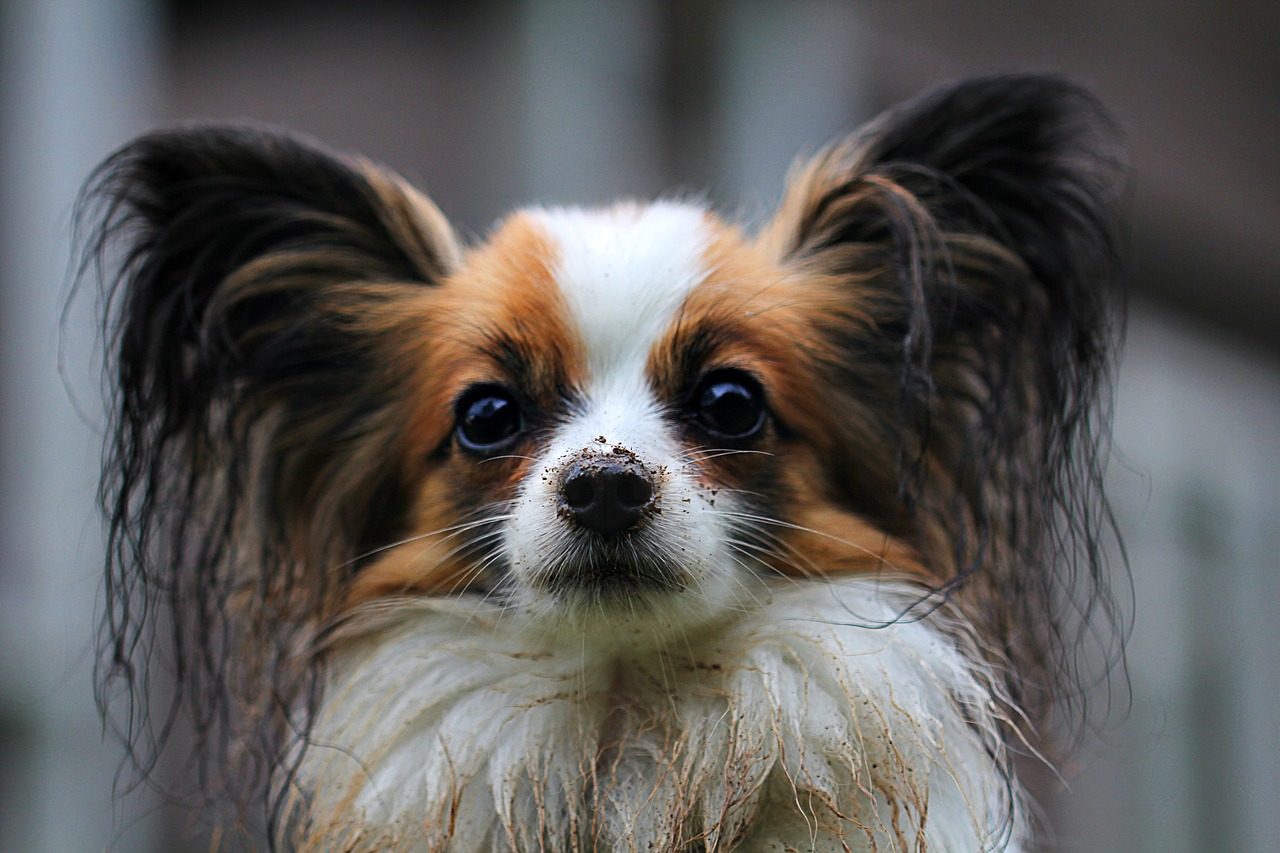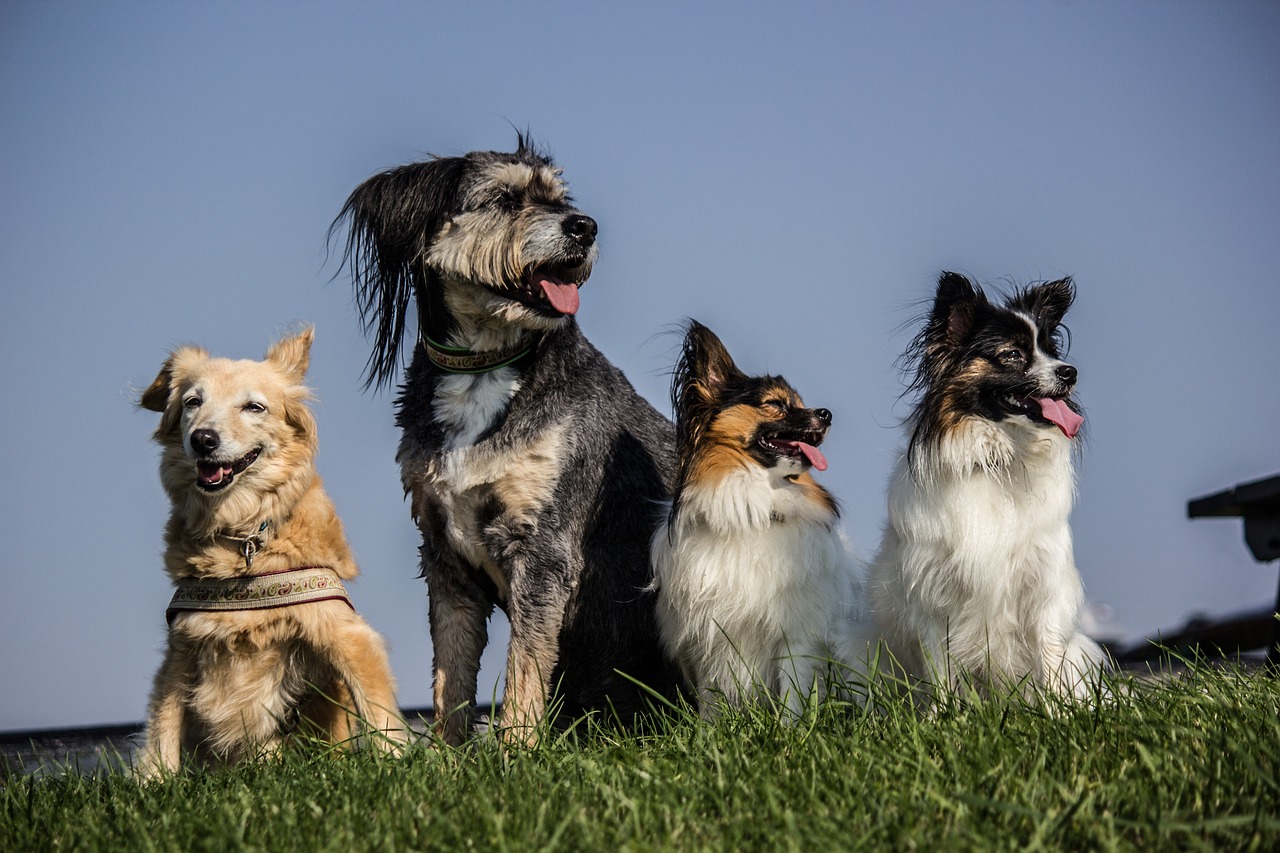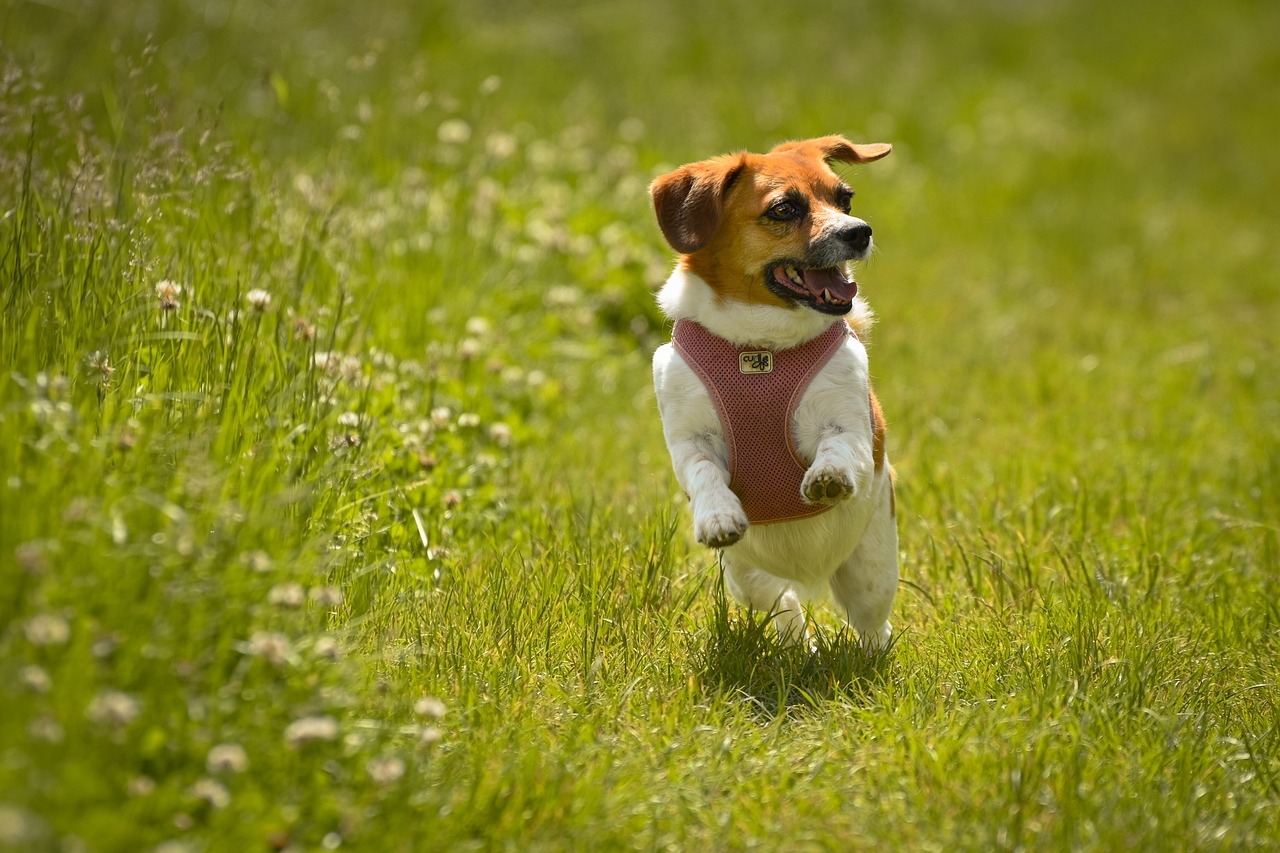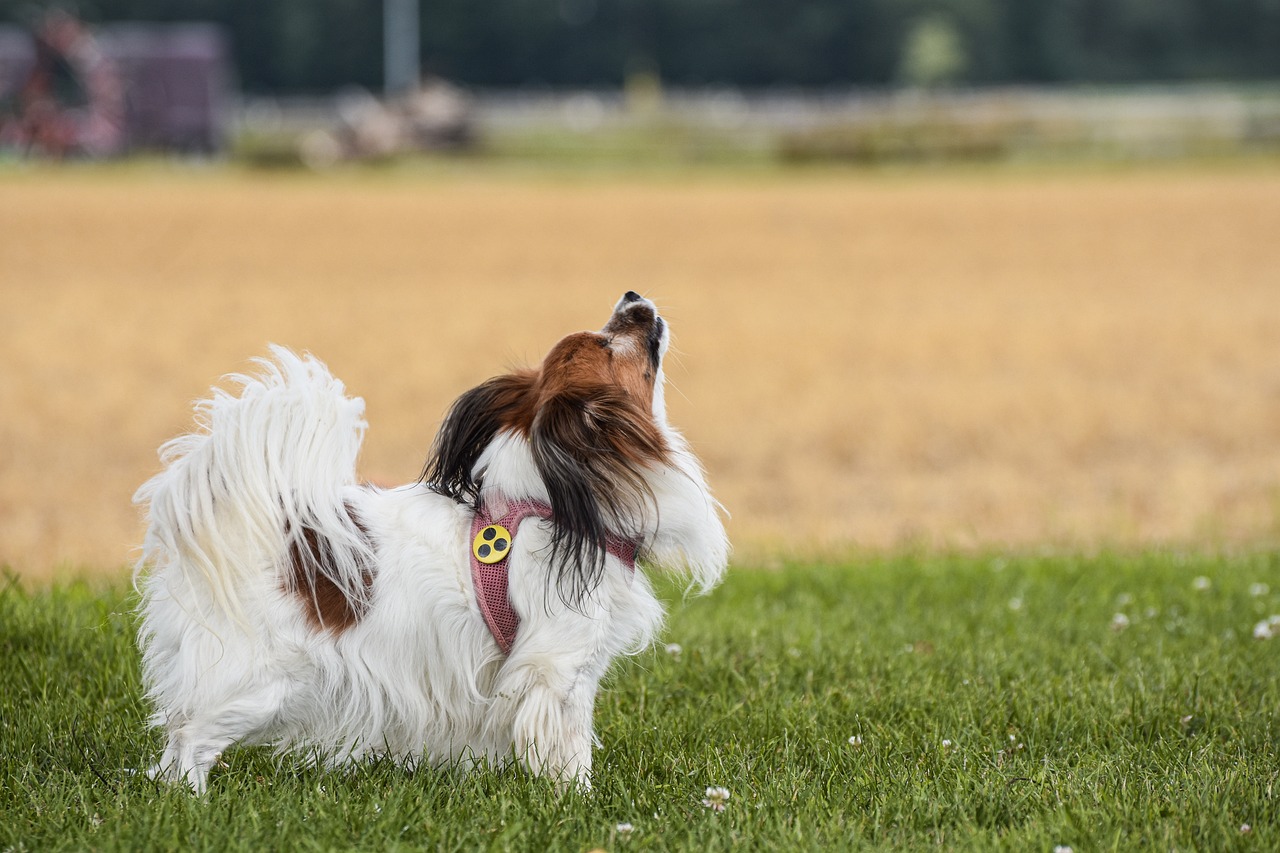
It is a tiny but sturdy puppy with an active, alert, and friendly personality. While it’s named for the butterfly like the shape of its erect ears the breed is also available with a drop-eared version. The breed was developed within France in the form of dwarf spaniels with ears that are straight like the breed that is known today. The ears are dependent on the individual’s preference, and therefore do not constitute a fault or defect if they are dropped. The puppies of both types may be part of the same litter.
Characteristics of the Papillon
The Papillons are adorable pets that make wonderful lap dogs for part-time and exercise companions. They are also excellent companions for a variety of families. The breed is generally suitable for families with more than one pet. The papillons are well-behaved with cats when you’ve established a relationship with them. This is also a wonderful breed for a new pet owner.
| Affection Level | High |
| Friendliness | High |
| Kid-Friendly | Medium |
| Pet-Friendly | Medium |
| Exercise Needs | High |
| Playfulness | High |
| Energy Level | Medium |
| Trainability | High |
| Intelligence | High |
| Tendency to Bark | High |
| Amount of Shedding | Low |
History of the Papillon

The Papillon was first discovered in France and was named after its signature ears. Papillon refers to butterflies in French. However, not all these species have ears that are erect A drop-eared species is called the Phalen (moth).
The breed was previously known for its dwarf spaniel appearance. It could have been around as early as the 13th century. Papillons were popular across Spain and Italy as time passed, and they were frequently depicted in paintings of the past. They were drop-eared papillons. with ears that were erect didn’t come out until the end of the 1800s. Famous owners include king Louis XIV of France and Marie Antoinette.
Papillons were introduced into their homeland in the U.S. during the late 19th century. It was recognized as a breed through the American Kennel Club (AKC) in 1915 and was full-time represented by the breed’s own club in 1935.
A papillon called Loteki Supernatural Being (Kirby) was awarded The Best In Show award at the Westminster Kennel Club dog show in 1999. He also was the winner of both the World Dog Show and the Royal Invitational in Canada.
Papillon Care

The Papillon breed is smart and can be trained in dog-related sports or participate in obedience contests. Though they’re small in stature they are much more active than a typical lap dog and would like to explore. They love the interaction and mental stimulation. If not occupied for long periods they may experience separation anxiety and behavior issues.
Exercise
The papillons are also lively and driven, therefore regular training is highly suggested. Papillons require plenty of playing time. They need to be active with a minimum of three walks a day for 20-30 minutes each time. It is advisable to have a garden or dog park nearby in which they can play too. Take note that due to their only single layer of coat, they might require protection or a jacket when it gets cold, but the breed can handle temperatures that are hot well.
Grooming
The papillon has a long, fine, silky hair coat that requires moderate grooming specifically hair brushing two to three times a week. The hair, however, doesn’t grow in a continuous manner which means that the breed does not require haircuts.
Training
As with all small dogs, the papillon can be feisty and possess an aggressive streak, however, they are extremely intelligent and can be taught well when you’re diligent. A consistent practice of obedience is essential.
They love to be the leader of the pack along with the other dogs in the house and could also be the leader of the pack towards humans If you don’t teach them properly. This could result in small dog syndrome. In this case, the dog is prone to exhibiting undesirable behavior such as jumping up and yelling at the owner.
Common Health Problems

Responsible breeders work to keep the highest standards for breeds set by kennel clubs such as the AKC. Dogs that breed according to those standards have a lower chance of being affected by hereditary diseases. However, certain hereditary health problems may develop within the breed. Here are a few health issues to be aware of:
- Patellar Luxation: This is a loose kneecap that can slide out of alignment and cause lameness and pain until the muscle is relaxed so it is able to return to its original position.
- The Trachea is collapsing: This can be observed with signs of coughing.
- Progressive Retinal Atrophy (PRA): It can be a degenerative disease that can cause blindness.
Diet and Nutrition
It is important to make sure that your dog isn’t overweight as could cause a tendency to knee pain. Most papillons can be satisfied with .25 or .5 Cups of dried food split into 2 meals. It may seem like small amounts however it’s easy to feed a papillon too much and notice the weight increase. Do not leave food out to feed your pet during the course of your day. You along with your household members do not feed an animal-human meal as a reward.
If you are concerned that your dog is gaining weight, talk about the matter with your vet to determine an eating routine, dog’s food, and exercise to aid in keeping your dog at the right weight.
Where to Adopt or Buy a Papillon
When you are looking for a papillon, keep in mind that this is a breed for toys and that this kind of dog is a bit fragile which means they could be prone to injury since they’re tiny and light. If papillons seem appealing to you they are a must. Papillon Club of America is an ideal place to begin looking for your next dog. Look through their breeder list (organized by state) to locate a member breeder. There are rescue organizations within your region or even using the PapAdopters & Placement Service an organization of volunteers committed to saving and re-homing purebred papillons.
Adopting a papillon can cost just a few thousand dollars in order to fund the cost of caring. But, breeders can be charged between $800 and $3000 for a puppy bred in a papillon. It’s also helpful to realize that finding a breeder for papillons isn’t easy.
Papillon Overview
Pros
- Friendly
- Highly skilled and trainable
- Fun and active
Cons
- Does not require a lot of attention and is afflicted by separation anxiety
- Feisty with a strong streak
- The tendency to bark is high.
More Dog Breeds and Further Research

Before deciding if this is the best dog for you, make certain to conduct lots of research. Meet with other owners of Papillon’s reliable breeders, credible breeders, and rescue groups to find out more.
If you’re looking for similar breeds, you can look into these breeds to see how they compare in terms of advantages and disadvantages:
There is a myriad of possibilities for canines available. If you do some investigation, you’ll identify the one you want to adopt.
FAQ
Are papillons suitable for children?
They are adored by children However, you’ll be required to ensure that your child is aware of what to do with the dog. Papillons can be injured easily and protect themselves in the event of being handled improperly or poorly by a child.
Are the papillons hostile?
Papillons can be alerted to the presence of strangers or sounds which are troubling their territory by barking. This is a concern for those who live in an area in which there is a lot of activity in the vicinity. While they may bark to warn you, they are generally not hostile toward strangers.
Do you have the ability to litter by bringing a papillon to the train?
Papillon puppies are believed as one of the breeds that are easiest to litter and learn to train as part of their home training. This can be beneficial for those who live in apartments or travel with their pet and need to go to the bathroom in a crowded area. The training of litter in a papillon does not mean that it will stop having to use the bathroom outdoors, however.